Exoskeletons for combat equipment. Experience of Russia and the USA
One of the topical topics in the context of the development of military equipment for a serviceman (BEV) is the creation and development of exoskeletons of various types. With the help of such products, you can expand all the basic capabilities of a fighter and simplify his work. The development of exoskeletons is underway in several countries, but not a single such sample has yet been adopted for service.
Consistent development
Work on the topic of exoskeletons for BEV in our country began a long time ago and has already yielded some remarkable results. Real samples are tested at test sites and in conditions of local conflict. The emergence of new systems with a different architecture and with more capabilities is expected.
Currently, the process of testing the passive type EO-1 exoskeleton is being completed. This product is a set of mechanisms capable of taking on the load and redistributing it to the support platforms, which allows the fighter to carry a heavier load. The passive exoskeleton has no power plant and is easy to operate.
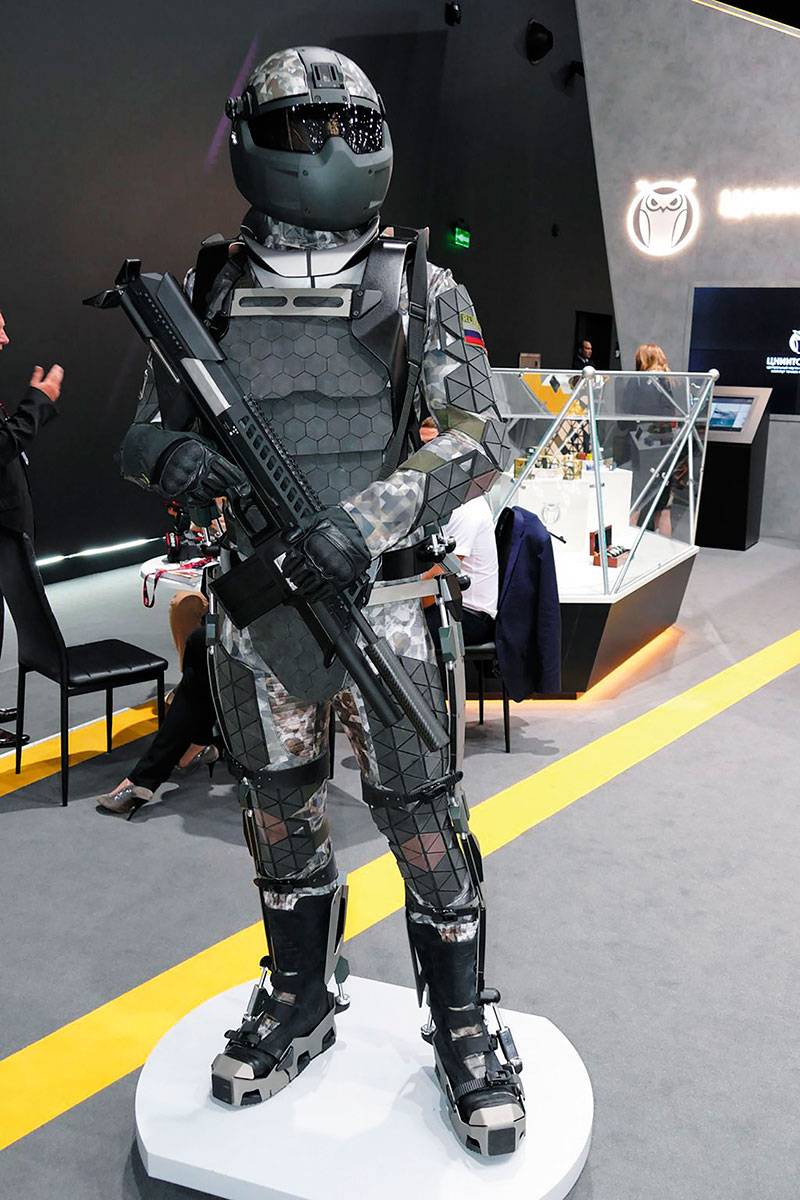
The first experimental EO-1 appeared in 2015, after which the practical development of the design began. In 2017, such products were used in Syria to facilitate the work of operators of the Uran-6 robotic complex. The portable control equipment from this RTK weighs approx. 20 kg, and all this load fell not on the shoulders of a person, but on the details of the exoskeleton.
In parallel, work was underway to create a promising active exoskeleton with built-in drives. In mid-2018, this design was brought to testing, and was also shown at a military-technical exhibition. The ability to carry heavier loads was demonstrated, as well as the use of weapons with a decrease in the load on the fighter.
At the same time, the need for further improvement of systems was noted. First of all, a promising exoskeleton needs a more efficient power source and more efficient drives. All this will increase the mobility and technical characteristics of the system.
Plans for the future
Earlier it was reported that the exoskeleton will have to be part of the promising BEV "Ratnik-3". The start of mass production and the introduction of such equipment are planned for 2025. It is expected that by this time a full-fledged active exoskeleton with a reserve of characteristics for further improvement of the BEV will be created.
In 2018, a variant of a promising BEV based on a high-performance exoskeleton was demonstrated. The carrying capacity of such a product allows you to include in the equipment various personal protective equipment, communication and control devices, etc. Issues of modular architecture have been worked out: the exoskeleton can be produced in different configurations for certain needs.
In 2020, it is planned to start work on the next generation BEV "Sotnik". It is likely that, based on the results of the initial research work, it will be decided to build this equipment on the basis of a promising exoskeleton. The exact appearance of the "Centurion" and its advantages over the "Warriors" of several versions will become known later.
US programs
The Pentagon and the defense industry took up the subject of exoskeletons much earlier, which made it possible to provide a serious lead over competitors. A number of similar systems with different capabilities and characteristics required for certain tasks were subsequently created. Some of these samples did not go beyond the laboratories, while others managed to reach tests in the army. However, exoskeletons have not yet been accepted into service.
At different times, passive and active exoskeletons were offered, and the latter were more interested in the army. Products of different architectures were tested - “complete” kits and systems for the lower extremities only. The development of energy supply for active eco-skeletons was going on for a long and difficult time.
The main result of numerous works was a wide experience in the field of exoskeletons and a number of necessary technologies for the further development of this direction, but not ready-made samples in service. However, the development of a full-fledged complex BEV based on an exoskeleton has been going on for several years.
TALOS project
The development of a new BEV started at the beginning of the tenth years by order of the Special Operations Command (SOCOM) and is carried out as part of the TALOS (Tactical Assault Light Operator Suit) project. This outfit has high requirements, incl. associated with the development of new technologies. Because of this, more than 50 scientific and design organizations have been involved in the work.
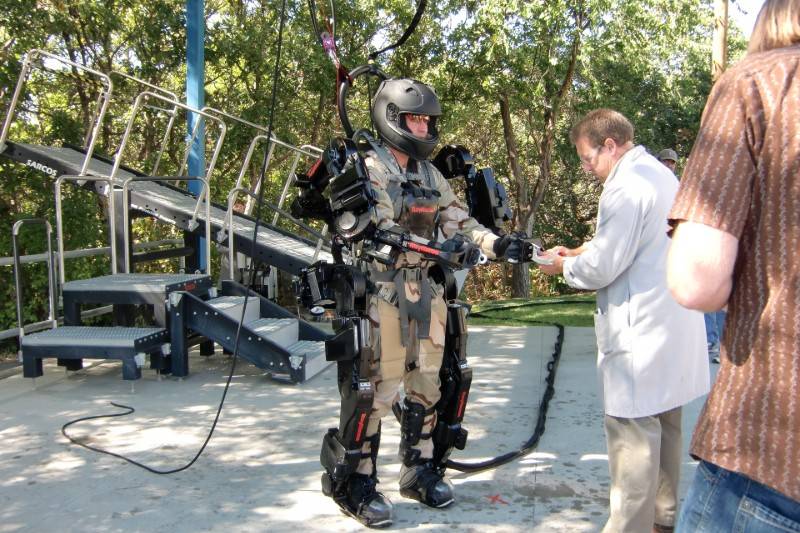
The first concepts of the TALOS project were presented in 2013, and over the next few years they promised to create full-fledged prototypes. In the future, it was repeatedly reported about the creation of certain components, but the full set of equipment is still not ready for adoption. Completion dates were repeatedly shifted, and previously planned demonstrations were canceled. The future of the project as a whole remains in doubt and SOCOM is not ready to disclose its plans.
The TALOS project provides for the creation of an active exoskeleton with a compact and powerful enough power plant. Due to its own drives, the product should facilitate the movement and transportation of goods - both items of equipment and any other load. It is proposed to supplement the exoskeleton with ballistic protection, which combines low weight and high efficiency. A variety of options for such protection were proposed and worked out, incl. based on fundamentally new components.
"On board" the exoskeleton must be equipped with communication facilities included in the unified control systems of the tactical echelon. Integration of sighting means of personal weapons is possible. It is also required to ensure constant biomedical monitoring of the condition of the fighter and monitoring of external conditions.
Thus, to create the BEV TALOS in its desired form, it is necessary to perform a number of rather complex R&D of various kinds, which has already led to a shift in terms. It is possible that the project will be completed, but it will go even further beyond the established time and financial framework. In addition, there is a risk of revising the terms of reference in order to simplify and speed up the work. However, in recent years, at the level of rumors, there has been a possible abandonment of TALOS. Instead of this program, a new one based on the accumulated experience can be launched.
"Warrior" against TALOS
In just a few years, developed countries have managed to obtain very remarkable results in the field of military exoskeletons. Several prototypes with different capabilities have been consistently created, and the development of promising systems for use in full-fledged BEV has already begun. In the middle of this decade, the latest developments in Russia and the United States must reach the troops - and show their capabilities.
It should be noted that at the beginning of the tenth years, Russian industry lagged behind overseas competitors. Later she managed to create new samples of exoskeletons and close the gap. Right now, two countries are working on next-generation systems with fundamentally new capabilities.
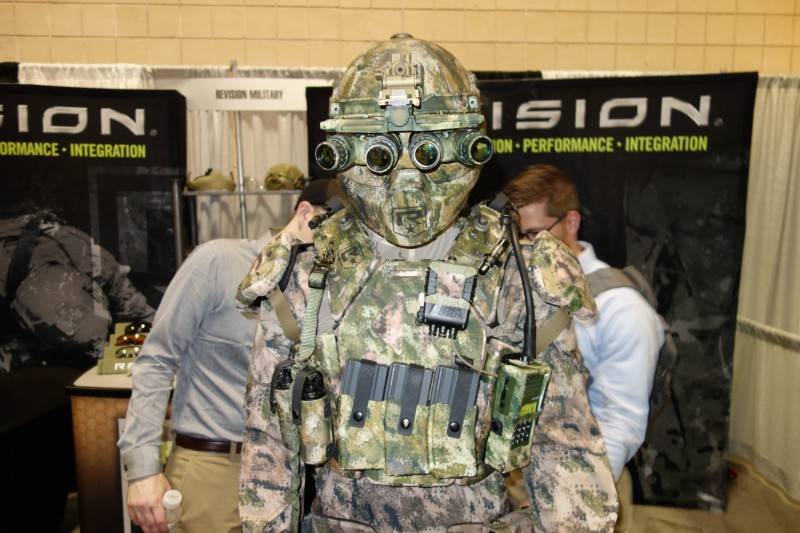
It is curious that Russian engineers and the military are already making plans for a future modification of the Ratnik, and their American colleagues are considering the possibility of abandoning the TALOS program or transforming it into another project. If work on the American BEV is stopped, the Russian project will become a leader in its field.
By now, there is every reason to expect that in the foreseeable future exoskeletons will become widespread in the armies of leading countries and will have a certain impact on their combat capability. However, the questions of the timing, scope and breadth of such distribution remain open. In addition, it is unclear which country will be the first to adopt the exoskeleton and combat equipment based on it. In this situation, Russia has a chance to gain a foothold in leadership positions.
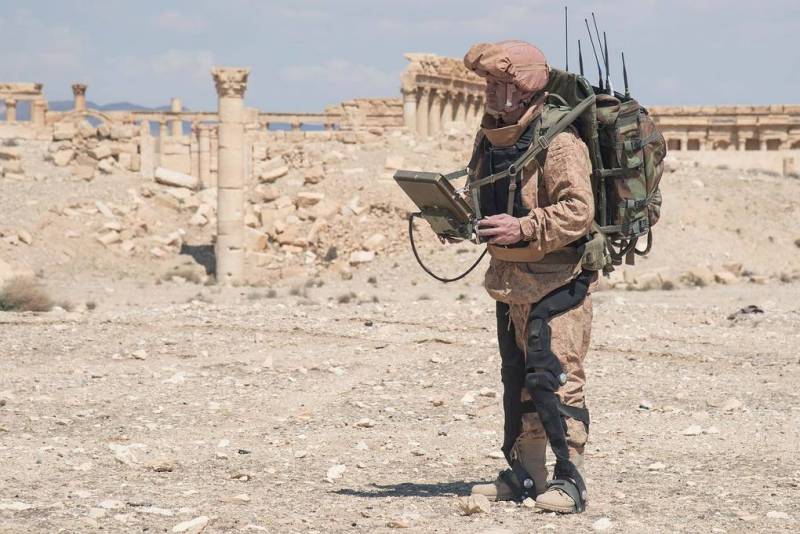
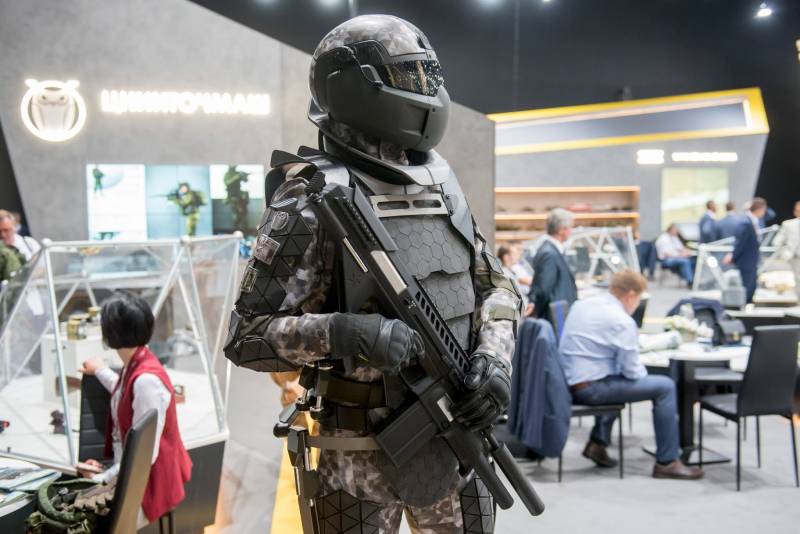
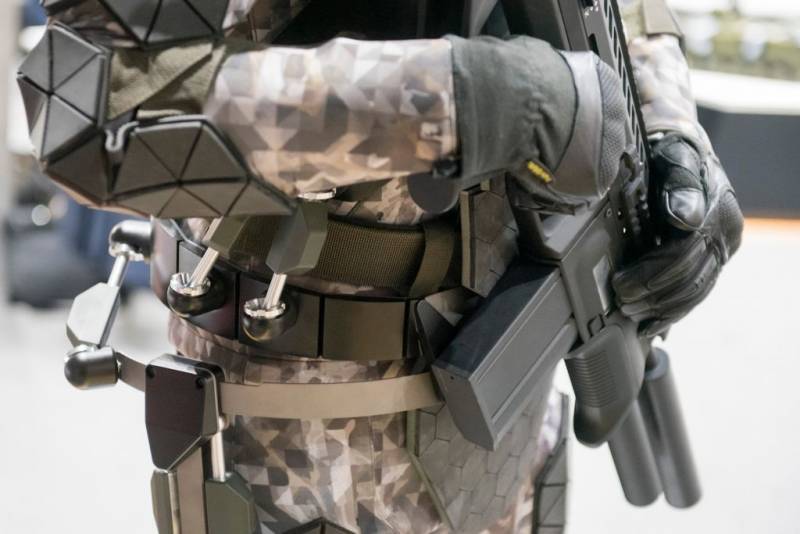
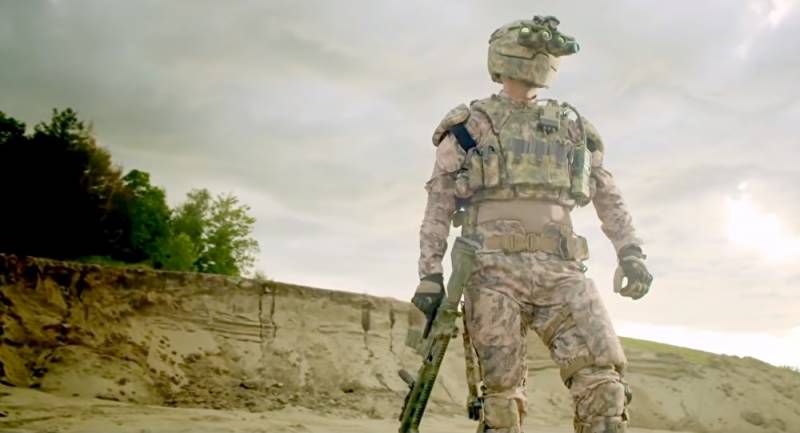
Information